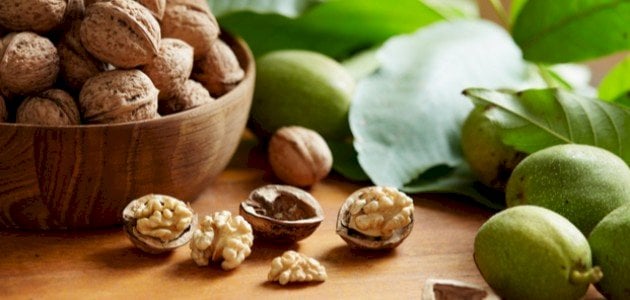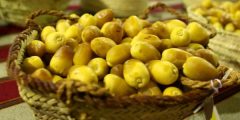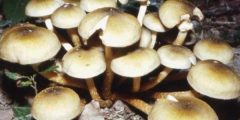The most prominent and famous types of walnuts
The walnut tree is a large deciduous tree. The walnut fruit looks like a spherical drop of water. The height of the tree can reach 40 m and spread over a distance of 15 m. It belongs to the Juglandaceae family and the Juglans genus. Famous for its delicious nuts and beautiful wood.[XNUMX]
Walnuts have many benefits, and there are several types of walnut trees, each of which has specific specifications.[XNUMX] It is as follows:
Black walnut
The black walnut tree (in English: Juglans nigra), also called the eastern American black walnut or American walnut, is its original home in eastern North America, specifically from southern Ontario to northern Florida. Among its most prominent features are the following:[XNUMX]
- It has dark bark with deep fissures that make the tree trunk feel rough.
- It grows to a height ranging between 22-40 m, and may occupy an area equal to its height.
- The black walnut grows inside a round green shell with a serrated edge.
- It is characterized by the presence of a crown of large feathery leaves (i.e. the leaf has a pinnate shape), and the number of leaves reaches 23 leaves on each two branches, and they become yellow in the fall.
- There is a scent emanating from the leaves and stems that is similar to citrus.
- It grows in sunny weather in forests and woodlands, and may live up to 130 years.
- The black walnut tree produces toxic chemicals in the soil.
- Flowers appear on it and then produce green fruits that are rough in texture and resemble a ball, with a diameter of 5 cm. When the black walnut falls from the tree to the ground, the peel of the fruit turns when it matures from green to dark brown or black, and inside there is a hard shell that protects the nut.
Read also:Types of clover
Ash walnut
The ash walnut tree or gray walnut (in English: Juglans cinerea) is called the white walnut tree. It is characterized by the presence of light gray bark, smooth to the touch, and its feathery leaves. It contains a few serrations (edges), and the number of its leaves reaches 17 leaves on the two branches, and the fruits are... Oval in shape, and small in size compared to black walnut.[XNUMX]
The height of the walnut tree reaches 20 m, and it grows in sunny areas. The white walnut fruit is characterized by a buttery taste.[XNUMX] That is, mixed with butter,[XNUMX] It produces toxic chemicals in the soil, but does not affect neighboring plants.[XNUMX]
The tree lives in moist bottomlands, forests, and dry limestone soils in eastern and midwestern North America. The yellowish-green flowers appear in late spring, and the ash walnut fruit ripens in the fall. It is not grown as an ornamental tree.[XNUMX]
Common walnut
The common walnut tree (in English: Juglans regia) is called the English walnut tree, and it is also called the Persian walnut, Madeira walnut, and Carpathian walnut, after its original habitat in southern Europe.[XNUMX]
It is characterized by an olive-brown bark that is soft to the touch, and when it grows, it has wide cracks inside it. The tree’s leaves are small in size, feathery and wide. The fruit is green, round, and turns dark brown after it falls to the ground. It is distinguished by its delicious flavour. It reaches a length of 20 m and contains a crown of leaves. Broad, grows in sunny climates.[XNUMX]
Read also:Where is black musk extracted from?
California walnut
The California walnut tree (in English: Juglans californica) is of two types: The first type is a large tree with multiple stems, and the other type is a small tree with a single stem. It grows in California and reaches a height of 15 m. It grows in warm climates and sunny climates. It is characterized by thick, greyish, wrinkled bark and smooth, slightly toothed leaves.[XNUMX]
The California walnut tree blooms in the spring, starting from April to May. Its flowers are single, either male or female, and are pollinated by the wind. It is a self-fertilizing plant. It lives in light (sandy) and medium (loamy) soils. Heavy soil (clay), and prefers to grow in moist and well-drained soil.[XNUMX]
Big walnut
The large walnut tree (Juglans major) grows in Arizona, and reaches a height of 15 m. It has a short, curly trunk, a wide crown that spreads over a width of up to 20 m, and compound, thin leaves, and the fruits resemble a green ball.[XNUMX]
Neotropical walnut
It is called the Andean walnut tree (in English: Juglans neotropica), and it is a slow-growing tree, reaching a height of 40 m. It is spread in the mountains of Peru, Colombia, and Ecuador, and is characterized by high-quality red wood. It has reddish-brown bark with deep, long grooves. Its leaves are long, reaching 40 cm, and are oval and pointed in shape.[XNUMX]
Read also:The best types of datesNeotropical walnuts are called several names, such as: Colombian walnut, Ecuadorian walnut and Negroid walnut.[XNUMX]
Ailanthus leaves
It is called the Japanese walnut tree (in English: Juglans ailantifolia), and it has a buttery nutty taste. It continues to grow until it reaches a height of 20 m. It has light gray bark characterized by a network of grooves, and the walnut fruit resembles the shape of a heart.[XNUMX]
The size of the tree's leaves is 60 cm.[XNUMX] It is compound in shape, with a light green surface. It is a deciduous tree, and the Japanese walnut tree is characterized by a broad, round crown.[XNUMX]
Small-fruited walnuts
It is also called the Texas black walnut tree (in English: Juglans microcarpa). Its fruit is small in size and may reach a height of 9 m. It grows in sunny areas and is considered one of the trees with useless wood and fruit. It has gray to dark brown bark with deep grooves. Small leaves with smooth margins.[XNUMX]
These leaves are characterized by being coniferous, long, and yellow-green in color. Some living organisms feed on the small nut, such as squirrels and rodents, and they spread in dry, rocky valleys, hills, and along the banks of streams.[XNUMX]
Manchurian walnut
East Asia is the original homeland of the Manchurian walnut tree (in English: Juglans mandshurica). It is fast-growing, tall, its fruit is small in size, it is not easy to extract it, and it tolerates a very low temperature of up to -45 degrees Celsius.[XNUMX]
The Manchurian walnut tree has greyish-brown bark, clear fissures, and compound leaves containing between 3-9 pairs of leaves, and one terminal leaf.[XNUMX]









